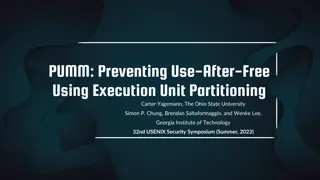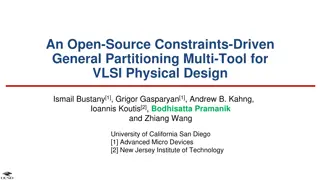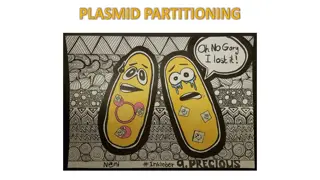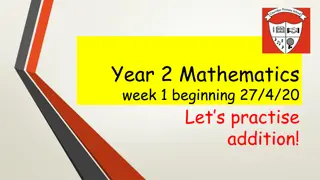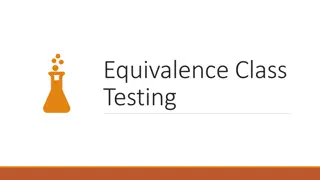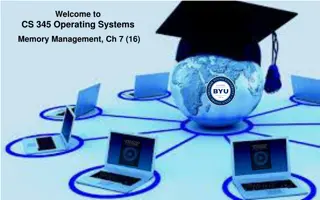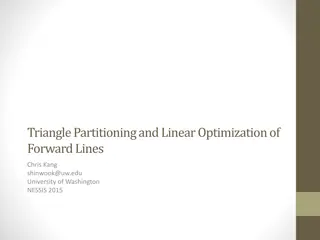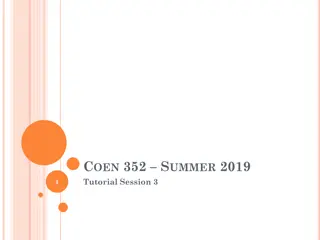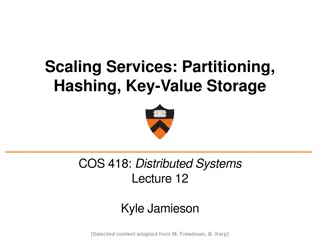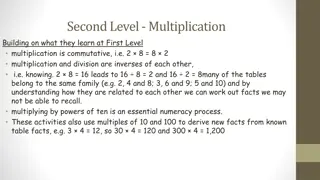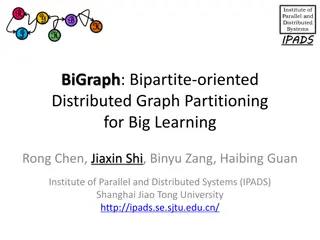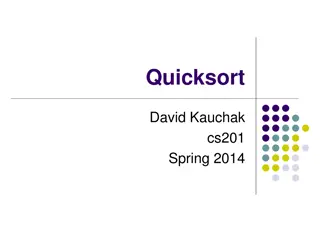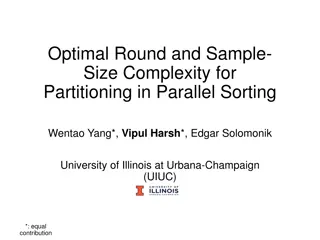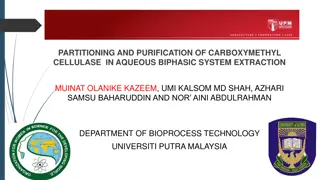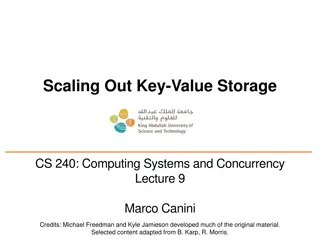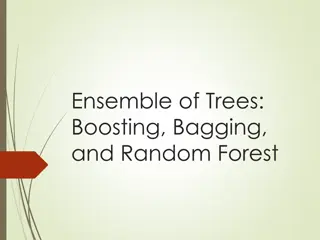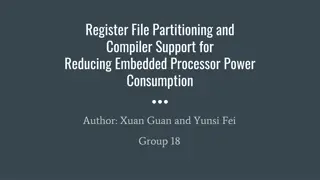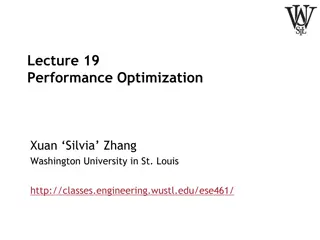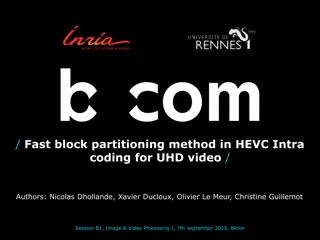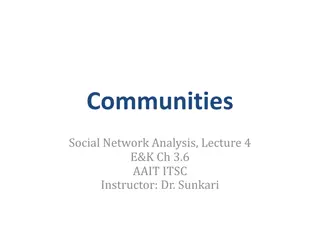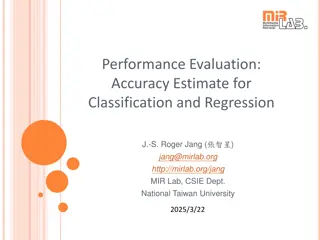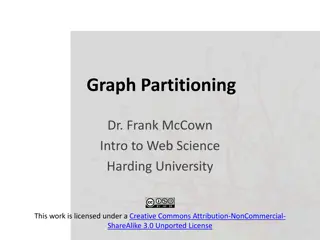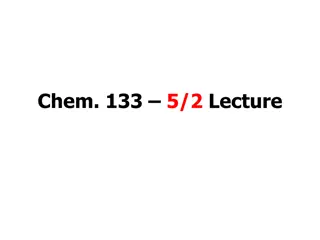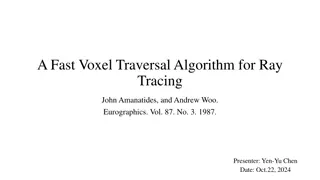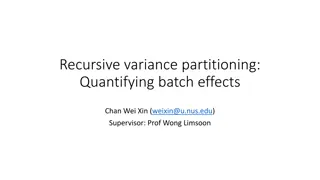PUMM: Preventing Use-After-Free Using Execution Unit Partitioning
Memory-unsafe languages like C and C++ are prone to Use-After-Free (UAF) vulnerabilities. PUMM introduces execution unit partitioning to efficiently tackle this issue. By segregating and managing execution units, PUMM aims to prevent UAF exploits and enhance software security.
1 views • 31 slides
Open-Source General Partitioning Multi-Tool for VLSI Physical Design
An open-source tool called TritonPart offers a constraints-driven approach for general partitioning in VLSI physical design. It replaces hMETIS and is integrated with OpenROAD, providing features like multi-way partitioning and embedding-aware techniques. TritonPart shows significant improvements ov
4 views • 20 slides
Plasmid Partitioning Mechanisms in Bacteria
The stable maintenance of low-copy-number plasmids in bacteria relies on partition mechanisms that ensure proper positioning during cell division. Different from high-copy-number plasmids, which rely on random diffusion, low-copy-number plasmids require regulated partitioning mechanisms to prevent d
3 views • 14 slides
Year 2 Mathematics Week 1: Addition Practice
In Year 2 Mathematics Week 1, students will be practicing addition of two-digit numbers using methods like partitioning into tens and ones and the expanded column method. Parents are encouraged to help and show different methods to their children, such as drawing dienes or using squared paper for la
1 views • 10 slides
Equivalence Class Testing and Its Application in Software Testing
Equivalence class testing is a software testing technique that involves dividing input values into classes for effective testing coverage. Equivalence classes are defined mathematically as subsets of a given set, ensuring partitioning and mutual exclusivity. By applying equivalence partitioning, tes
7 views • 21 slides
Azure Cosmos DB Partitioning
Learn how Azure Cosmos DB leverages partitioning to automatically scale data globally. Discover the importance and types of partitioning, logical and physical partitions, best practices, and more.
2 views • 24 slides
Memory Management Techniques in Operating Systems
Operating systems employ various memory management techniques such as fixed partitioning, dynamic partitioning, paging, segmentation, and virtual memory to efficiently utilize memory resources. These techniques help in organizing memory allocation for programs, managing fragmentation, and optimizing
1 views • 17 slides
Triangle Partitioning and Linear Optimization in Hockey Line Analysis
In this presentation, the speaker discusses the use of triangle partitioning and linear optimization techniques to analyze hockey team lines. The goal is to find chemistry between players, allocate ice time effectively, and match up against opposing lines for a better chance of winning games. Tradit
6 views • 16 slides
Balanced Graph Edge Partition and Its Practical Applications
Balanced graph edge partitioning is a crucial problem in graph computation, machine learning, and graph databases. It involves partitioning a graph's vertices or edges into balanced components while minimizing cut costs. This process is essential for various real-world applications such as iterative
4 views • 17 slides
Introduction to QuickSort Algorithm
Explore the QuickSort algorithm with details on the worst-case time complexity, partitioning process, recursive method, and example scenarios. Understand how QuickSort efficiently sorts arrays by choosing a pivot, comparing elements, and recursively partitioning the array until sorted. Dive into the
7 views • 19 slides
Scaling Services and Key-Value Storage Techniques
This content delves into various aspects of scaling services, including partitioning, hashing, and key-value storage. It discusses vertical and horizontal scalability, the chaotic nature of horizontal scaling, techniques for partitioning data, and case studies like Amazon Dynamo. The importance of p
3 views • 48 slides
Advanced Multiplication Concepts Through Arrays and Partitioning
Delve into the intricacies of multiplication through hands-on activities using arrays, partitioning, and understanding the commutative property. Discover how arrays can help visualize multiplication, learn to partition numbers for easier calculations, and grasp the concept of multiplying by powers o
1 views • 17 slides
Fun Math Activity: Number Partitioning with Whiteboards
Get your whiteboards ready for a fun math activity on number partitioning! Practice partitioning numbers into ones and tens, then solve equations by adding the ones and tens separately. Check out the examples provided to understand the concept better.
1 views • 58 slides
BiGraph: Bipartite-Oriented Distributed Graph Partitioning for Big Learning
BiGraph is a distributed graph partitioning algorithm designed for bipartite graphs, offering a scalable solution for big data processing in Machine Learning and Data Mining applications. The algorithm addresses the limitations of existing partitioning methods by efficiently distributing and managin
4 views • 45 slides
Developing MPI Programs with Domain Decomposition
Domain decomposition is a parallelization method used for developing MPI programs by partitioning the domain into portions and assigning them to different processes. Three common ways of partitioning are block, cyclic, and block-cyclic, each with its own communication requirements. Considerations fo
3 views • 19 slides
Factors Affecting Photosynthetic Efficiency in Oil Palm Plantation
All green plants, including oil palm, rely on photosynthesis to convert carbon dioxide and water into carbohydrates using solar radiation. Key factors influencing oil palm productivity include solar radiation availability, radiation absorption by the canopy, conversion efficiency, dry matter partiti
3 views • 20 slides
The Quicksort Algorithm
Quicksort is a widely used sorting algorithm that operates by partitioning an array into smaller subarrays. The `public.static.int.partition` method plays a crucial role in Quicksort by selecting a pivot element and rearranging elements around it based on their values. This process creates a split b
0 views • 50 slides
Clustering Algorithms in Data Science
This content discusses clustering algorithms such as K-Means, K-Medoids, and Hierarchical Clustering. It explains the concepts, methods, and applications of partitioning and clustering objects in a dataset for data analysis. The text covers techniques like PAM (Partitioning Around Medoids) and AGNES
3 views • 74 slides
Optimal Round and Sample-Size Complexity for Parallel Sorting Partitioning
This paper explores optimal round and sample-size complexity for partitioning in parallel sorting, discussing parallel partitioning approaches such as sampling and histogramming. It presents a model where processors communicate a set number of keys per round, highlighting the trade-off between round
0 views • 18 slides
Partitioning and Purification of Carboxymethyl Cellulase in Aqueous Biphase System
Cellulases enzymes are essential in various industries and purifying them is crucial for understanding their properties. Conventional techniques along with aqueous biphasic systems like liquid-liquid fractionation are used for extraction and separation. The latter enables selective partitioning of b
3 views • 22 slides
Scaling Out Key-Value Storage: Techniques and Challenges
The key concepts of scaling out key-value storage systems, including horizontal vs. vertical scalability, data partitioning techniques, and the challenges of managing distributed systems. Learn about consistent hashing, modulo hashing, and the impact of changing system size on data partitioning. Gai
2 views • 46 slides
Ensemble of Trees: Boosting, Bagging, and Random Forest
Ensemble of Trees explores various tree-based methods such as CART, MARS, Boosting, Adaboost, Gradient Boosting, Bagging, and Random Forest. It delves into the concept of partitioning the feature space, fitting simple models in rectangles, recursive vs. non-recursive partitioning, regression trees,
1 views • 49 slides
Disk Organization and Operations
The design criteria and effects of file systems on programs, this content delves into disk organization, file system partitioning, disk geometry, and disk access time considerations. Learn about the structure of disks, file system partitioning, and the intricacies of disk operations such as seeking,
1 views • 26 slides
Memory Management Techniques in Operating Systems
In operating systems, memory management techniques play a crucial role in optimizing memory usage. Techniques such as fixed partitioning, dynamic partitioning, simple paging, simple segmentation, virtual-memory paging, and virtual memory segmentation are employed to efficiently allocate memory resou
0 views • 22 slides
Register File Partitioning for Power Efficiency in Embedded Processors
This study focuses on reducing power consumption in embedded processors by partitioning the register file into hot and cold regions. By strategically placing frequently accessed registers in the hot region and rarely accessed ones in the cold region, energy efficiency is improved. Techniques such as
5 views • 21 slides
Proper Statistical Analysis of Data Mining Techniques
Conducting statistical analysis on data sets is crucial for evaluating the performance of data mining techniques. This involves proper partitioning of data sets and using statistical tests to compare methods, ensuring the safe use of parametric and non-parametric tests. Understanding normality and e
0 views • 7 slides
Performance Optimization Techniques in Hardware Design
Learn about performance optimization strategies in hardware design, including pipelining, module partitioning, and useful Verilog features. Explore topics such as 32-bit arithmetic shift right design and horizontal partitioning for efficient circuit implementation.
2 views • 26 slides
Fast Block Partitioning in HEVC Intra Coding for UHD Video
Explore a fast block partitioning method in HEVC Intra coding for UHD video, addressing the efficiency of HEVC over MPEG-4/AVC, the impact of quad-tree structures, and algorithms for fast Intra partitioning. Get insights into the latest video standard, HEVC's bitrate savings, and the goal to limit e
0 views • 19 slides
Exploring Community Detection and Graph Partitioning in Social Network Analysis
Delve into the intricacies of community detection and graph partitioning within social network analysis, understanding structural equivalence, community structures, and the importance of finding communities. Discover methods like CONCOR and edge removal for efficient graph storage and access, and en
0 views • 42 slides
Performance Evaluation: Indices, Recognition Rate, and Data Partitioning
Learn about typical performance indices for classification and regression models, including recognition rate and error metrics. Understand concepts like underfitting, overfitting, and canonical data partitioning to optimize model construction and evaluation.
2 views • 33 slides
Methods for Graph Partitioning and Community Detection
Discover the world of graph partitioning and community detection with insights into algorithms like Girvan-Newman and techniques such as divisive and agglomerative methods. Explore how network structures can be broken down, identified, and analyzed for various applications in social and biological n
1 views • 50 slides
Classification Using Decision Trees
Learn about the concept of classification using decision trees, including the goal of predicting outcomes based on predictors, key ideas like recursive partitioning and tree pruning, and a simple example involving mowers and predictor variables. Explore how decision trees are represented by tree dia
0 views • 31 slides
Analysis of Quality Data Partitioning Metric Space
This research delves into new types of quality data analysis through partitioning metric space. It explores tree-structured data, nominal and ordinal data, similarity and dissimilarity, dispersion measures, data partitioning, data clustering, and more. The study examines degrees of connection, sum o
4 views • 19 slides
Chromatography Overview and Partition Theory for Separation Science
Explore the fundamentals of chromatography in separation science, including the principles of partition theory and the instrumental overview of chromatography. Learn about the main purposes of chromatographic separations, chromatograph components, and the complexities of partitioning between distinc
2 views • 20 slides
Fast Voxel Traversal Algorithm for Ray Tracing: A Comprehensive Overview
Learn about the efficient voxel traversal algorithm for ray tracing introduced by Amanatides and Woo in 1987. This algorithm simplifies 3D space partitioning with minimal floating-point computations, reducing the number of ray-object intersections. Explore strategies like hierarchical bounding volum
1 views • 11 slides
Quantifying Batch Effects and Recursive Variance Partitioning Research
Explore the research on quantifying batch effects in data sets with small sample sizes using methods like PVCA, gPCA, k-BET, and LISI. Learn about Recursive Variance Partitioning (RVP) for measuring variance due to batch effects, with examples from simulated RNA-seq and real-world data sets.
0 views • 15 slides
Distributed Database Design: Partitioning Algorithm Explained
Learn about partitioning algorithm in distributed database design, which involves finding sets of attributes accessed by distinct applications and deciding on fragments. The process ensures correctness and completeness of vertical fragmentation, enabling reconstruction of the global relation through
3 views • 12 slides
Understanding SQL Server Partitioning Concepts
Gain insights into SQL Server partitioning, covering definition, benefits, drawbacks, key considerations, and implementation steps. Learn how to split tables, manage partitions, optimize performance, and more.
2 views • 41 slides
Revolutionizing Graph Partitioning with GAP Framework Innovations
Explore the revolutionary GAP Framework for graph partitioning, leveraging deep learning to optimize performance across various domains. Learn about the core problem, benefits of deep learning, applicability, performance evaluation, and real-world impact.
0 views • 13 slides
Cost Model for Pregel in GraphX: A Comprehensive Study
Explore the cost model for Pregel in GraphX, covering the Pregel model, graph partitioning, evaluation of partitioning algorithms, Spark GraphX strategies, and more. Discover how partitioning impacts algorithm performance and efficiency." (248 characters)
3 views • 26 slides
